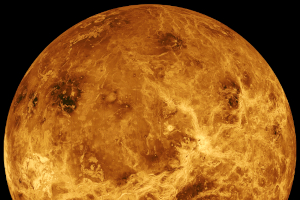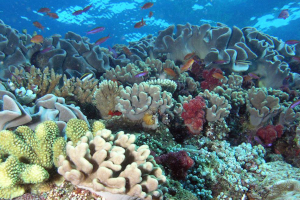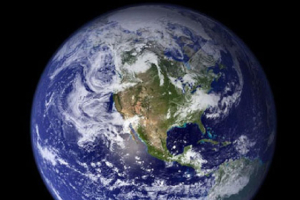Can CO2 Levels Reveal Alien Life?
|
|
Planets near their stars often face a runaway greenhouse effect, where oceans evaporate and CO2 accumulates, creating conditions similar to those on Venus. But could life delay this fate? In this project, we explore whether and how biological processes - specifically biologically enhanced weathering - can stabilize the climate of stagnant-lid planets close to their stars and postpone a runaway greenhouse. Our findings reveal that the onset of a runaway greenhouse can be delayed by up to 2 billion years on inhabited planets compared to lifeless ones. This suggests that low CO2 levels in the atmospheres of high-insolation stagnant-lid planets could serve as an indirect biosignature, offering an exciting new approach to the search for life beyond Earth.
Related publication: Höning et al. 2024, Astronomy & Astrophysics (in press)
|
Carbon Emissions, Climate Change and Sea Level Rise
|
|
Earth's climate is heating up - due to tons of carbon, humans are pumping into the atmosphere. As a consequence, ice sheets are melting, above all, Greenland and Antarctica. But the connection between carbon emissions, melting of ice sheets, and rise of the sea level is complex and non-linear. In this project, we explore tipping points of the Greenland ice sheet: Critical thresholds, above which the system changes so that sea level rise would speed up, without return.
|
Habitability and Early Evolution of Venus
|
|
Venus' blazing hot surface is a consequence of massive CO2 release into the atmosphere. But when and how did this happen? Was Venus once a habitable place with liquid water on its surface, similar to Earth today? Interior-atmosphere exchange processes that control Venus' habitability depend on the mode of convection, and in particular a stagnant-lid regime - as observed today - complicates the carbon cycle.
Related publication: Höning et al. 2021, Journal of Geophysical Research: Planets
|
Land Plants, Marine Organisms, and Earth's Climate
|
|
The long-term carbon cycle is an important feedback mechanism that keeps Earth's climate stable over millions of years. Land plants are an important component in this cycle, as they enhance the dissolution rate of rock. On shorter timescales, marine organisms play an important role, as they make their skeletons and shells out of calcium carbonate. If the atmospheric CO2 increases, biogenic calcium carbonate production slows down. Since calcium carbonate production leads to a release of CO2 into the atmosphere, these organisms help to stabilise the climate. This project addresses the question of how efficient life is in stabilising our climate over several thousand or million years.
Related publication: Höning 2020, Geochemistry, Geophysics, Geosystems
Related presentation: Climate oscillations damped by bioactivity, vPICO, EGU 2021
|
Planetary interior evolution and habitability
|
|
Billions of years ago, our Sun was much fainter, but still the Earth's surface was covered by oceans. Therefore, there must have been much more greenhouse gases in the atmosphere than today. In this project, we study the role of Earth's interior. We find that when the mantle was hotter than today, subduction of carbon into the mantle was rare, and CO2 could accumulate in the atmosphere. What is the implication for Earth-like exoplanets?
Related publication: Höning et al. 2019, Astronomy & Astrophysics
Related presentation: Climate evolution of rocky planets, EAI Seminar
|
Feedbacks in Continental Growth
|
|
Most of the Earth's continental volume was already present billions of years ago. Today, there is a continuous equilibrium between continental production and erosion. How can we explain that this equilibrium did not change much over the past billion years despite the cooling of Earth's mantle?
Related publication: Höning et al. 2019, Physics of the Earth and Planetary Interiors
|
Life, Feedback Loops, and the Interior Evolution of Earth
|
|
The Earth's system is complex machinery in which life plays a crucial role. Water in the Earth's mantle reduces its viscosity, which speeds up the oceanic plates. This affects the rate of volcanism and subduction, and thereby the flux of water between the mantle and the oceans. Life enters the system as it affects weathering and erosion rates of rocks, and thereby indirectly the subduction flux of sediments into the interior. How would the Earth system work without life?
|
|
|






